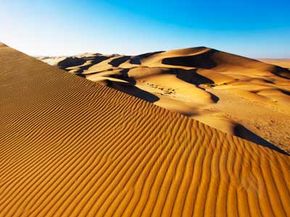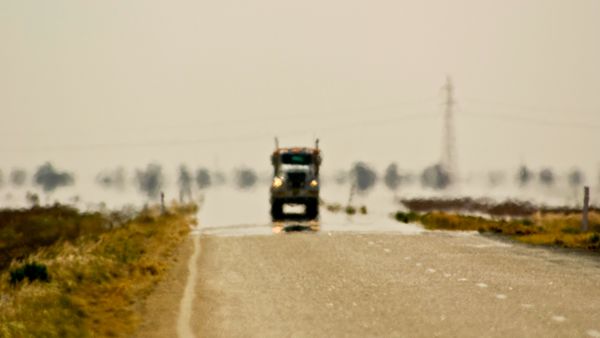When you think of a sand dune, you probably picture a barren pile of lifeless sand. But sand dunes are actually dynamic natural structures. They grow, shift and travel. They crawl with living things. Some sand dunes even sing. There are coastal sand dunes and land-locked desert sand dunes laid out in artistic patterns. There are even sand dunes on Mars.
To understand sand dunes, you need to understand sand. Sand forms from the erosion of rocks. As rocks break down, the resulting materials are transported by wind, water or ice (glaciers) and end up as sediment in the sea or -- as we'll learn in this article -- as sand dunes. For example, desert sand is likely the result of a dried-up glacier or ancient sea or lake.
Advertisement
The most common ingredient in sand is silica, or quartz. Sand's makeup varies from place to place, depending on the local rocks. For example, you'll find fine white sand in a coral reef setting because the sand contains ground-up coral. Darker sands are rich in magnetite or made up of tiny, smooth pieces of lava -- you'll find this sand on the beaches of Hawaii. The famous White Sands National Monument in New Mexico comprises white sand, which contains mostly gypsum, or the sulphate of lime. The texture of a grain of sand provides clues about how far it has traveled. The smaller the grain, the farther it's probably come and the easier it will move around in the wind.
The short version of how sand dunes form is that sand blows around and then piles up. Of course, there's a bit more to it than that.


